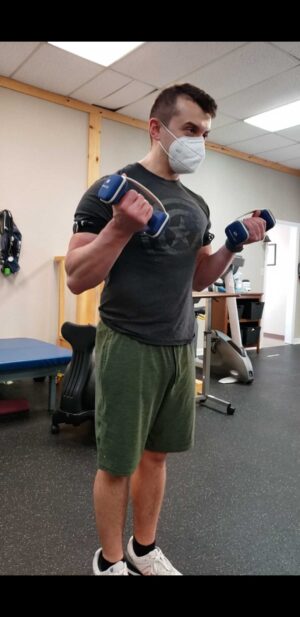Are You at Risk of Getting Tennis Elbow?
Is Tennis Elbow Only for Tennis Players?
The answer is No.
Who Gets Tennis Elbow and Why?
Anyone that has a job or performs a sport that overuses the muscles on the outside of the elbow. Some examples of professionals at risk are:
- Painters
- Plumbers
- Auto mechanics.
The muscles that originate on the outside of the elbow are used to extend the wrist, so any activity where someone repeatedly extends the wrist can result in lateral epicondylitis or inflammation of the muscle.
Where Did The Term Tennis Elbow Come From?
According to New England Baptist Hospital, the term tennis elbow became popular in 1883 due to an increase in elbow pain or Lateral Epicondylitis due to a new popular sport called Tennis.
What are the Signs and Symptoms?
- Aching on the outside of the elbow with activity and after activity
- Pain with gripping items such as a cup or racquet
- Pain with moving the wrist up
- Swelling over the lateral elbow
- Tenderness to touch the lateral elbow
- Pain radiating from the elbow to the wrist
What are the potential Causes?
- Performing repetitive activities such as tennis or work activities without proper warm-up or rest breaks
- Weak muscles in the shoulder, shoulder blade, or wrist
- Referred pain from a pinched nerve in the neck. Requires a Physical Therapy evaluation to differentiate
What are some of the treatments?
- Rest, Ice, and stretch
- Physical Therapy
- Dry Needling
- Kinesiotape
- Low Level Laser Therapy
- Amino Neuro Frequency or ANF for short (www.anftherapy.com)
Should I use a strap and do they Work?

*click to view strap on Amazon. Disclaimer: affiliate commission earned
Healing from tennis elbow is difficult due to the constant use of our hands pulling on the area that is injured. Envision slamming your finger in a door over and over and asking it to heal. A tennis elbow strap reduces the pull on the origin of the muscle; which allows you to use your hand for everyday activity without overworking the muscle so it can heal.
If you use a strap and do NOT experience significant improvement in a week, see a physical therapist or a physician for further assessment. A medical professional can differentiate if you are experiencing tennis elbow or if your pain is coming from somewhere else.
If you have persistent elbow pain that is interfering with your activities, call our offices today to start your road to recovery. To Set up an appointment call 803-831-1454.
These tips are for information purposes only and are not intended to diagnose or replace recommendations by your physical therapist or physician. Never start a new exercise routine or treatment regimen without consulting your physician, physical therapist, or personal trainer.
References
https://www.mayoclinic.org/diseases-conditions/tennis-elbow/symptoms-causes/syc-2035






